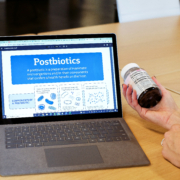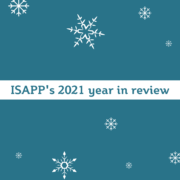Popular media, misinformation and ‘biotics’
By Mary Ellen Sanders, PhD, Executive Science Officer, ISAPP
Encountering misinformation is all too easy when seeking understanding of probiotics, prebiotics, synbiotics, and postbiotics (collectively, ‘biotics’). It can be perpetuated both by proponents and detractors. Through this lens, I’m prompted to comment on some high profile pieces making news recently. A Washington Post article Probiotic supplements may do the opposite of boosting your gut health was published on March 28, 2023, by Anahad O’Connor. This author was then interviewed for a CBS video story Studies find that probiotics can harm gut health on March 30, 2023. Then, a National Geographic article Probiotics, prebiotics, postbiotics. What’s the difference? was published on the same day.
These pieces appropriately acknowledge the availability of evidence linking probiotics to human benefits. Yet the points raised about potential harms from probiotics and a misunderstanding of what ‘biotic’ substances really are deserve comment.
Harms of probiotics
Amid a backdrop of marketing and media messaging lauding the many benefits of probiotics, reporters are understandably drawn to the counter message that ‘probiotics can harm gut health’. Safety must always be rigorously assessed, as encouraged by a 2023 ISAPP paper focused on emerging issues in probiotic safety (see here). However, the claims of harm made – although generated from studies in humans – are not based on clinical endpoints. Instead they are based on either microbiome endpoints (Suez et al. 2018) or on post hoc analysis of biomarker outcomes (Wastyk et al. 2023). The limitations of the Suez et al. 2018 study were discussed in more detail previously (See: Clinical evidence and not microbiota outcomes drive value of probiotics). This paper evaluated the effect of one multi-strain probiotic product and is the only paper I am aware of that shows that probiotics inhibit microbiome recovery after antibiotic treatment. The paucity of supporting evidence for the harm supposedly documented in this paper is not mentioned in the stories. It is noteworthy that in the Wastyk et al. 2023 paper the authors acknowledge that the study did not achieve its primary objectives, and in referring to their post hoc analysis (including the ‘evidence’ for harm), they specifically acknowledge that such analysis is not conclusive evidence: “We next leveraged aspects of our study design … in a discovery analysis process to reveal trends that could inform possible … hypotheses for future studies.” These studies are best used for generating hypotheses requiring further study.
Another criticism that was leveraged as evidence that probiotics cause harm is that probiotics reduce microbiota diversity. Any probiotic-induced reduction in diversity of fecal microbiota has not been shown to be associated with harm. Further, most studies show no significant overall changes in microbiome composition in response to traditional probiotic administration. However, it should be understood that the value of diversity as a marker of health remains unproven. The evidence is from observational studies and only shows associations, not causality.
You can’t both object to criticisms based only on microbiome data but then promote probiotics based on it.
As stated, relying on microbiota endpoints to advance the idea that probiotics cause harm is not justified. But I cannot escape the fact that probiotic proponents in part contribute to this thinking. When probiotics are marketed as being able to ‘balance the microbiota’, without clinical data to substantiate a benefit, aren’t they promoting the same limited science?
Adherence to definitions of biotics needed
ISAPP has rigorously considered and offered definitions for probiotics, prebiotics, synbiotics, postbiotics and fermented foods (see here for a summary), which have been presented in highly cited reviews in Nature Reviews Gastroenterology and Hepatology (see here, here, here, here and here). These efforts were undertaken to advance a common understanding of these terms, so that precision can be attained in communications on them.
This objective has been far from realized. Misuse of these terms continues on product labels, in scientific publications, and in popular press communications.
The articles cited above compelled me to offer some take home messages for those responsible for accurately communicating science:
- “Prebiotics + probiotics = postbiotics”, a heading in the National Geographic article, is completely wrong.
Probiotics are: Live microorganisms that, when administered in adequate amounts, confer a health benefit on the host
Prebiotic is: A substrate that is selectively utilized by host microorganisms conferring a health benefit on the host
Postbiotic is: Preparation of inanimate microorganisms and/or their components that confers a health benefit on the host
- Fermented foods are not the same as probiotics. Most fermented foods have not been proven to improve health (associative studies have suggested, but in most cases not proven, health benefits), many do not retain live microbes, and most are not made with microbes characterized to the strain level. All these are requirements to meet the definition of a probiotic. See here, here and here for clear discussions of this issue.
- Fermented foods are not the magic bullet that many portray them as. Yes – for that subset of fermented foods that retain live microbes – they may contribute a diversity of live microbes to the diet. ISAPP has recently researched this area (see recent ISAPP publications here and here). And yes, they are tasty. However, the evidence level for benefits of traditional fermented foods is nowhere near the level for probiotics. Still, healthcare professionals critical of evidence supporting probiotic benefits commonly recommend fermented foods.
- Postbiotics do not refer to ‘metabolites from probiotics’. See here for why ISAPP focused the definition of postbiotic on inactivated microbes with or without their metabolites.
- In simplistic language, prebiotics can be viewed as food for beneficial microbes, but, typically, prebiotics target the normal microbes in the gut, not probiotics. See here.
Conclusion
Both the positive and negative effects of probiotics based on microbiome assembly can be misrepresented in the press, by some marketing claims, and sometimes in scientific literature. The field will benefit from communications that acknowledge the limitations of available science. Further, it’s important for clarity in communication that the field coalesces around established definitions and honor the criteria needed to meet those definitions. Additionally, scientists and medical professionals should apply the same scrutiny and critical thinking to fermented foods as they do to probiotics.
ISAPP encourages healthy debate, critical review of new studies and innovative research. Since ISAPP’s mission is focused on promoting the science of these substances, journalists are invited to reach out as needed to ISAPP for an evidence-based perspective on this evolving field (www.ISAPPscience.org).










